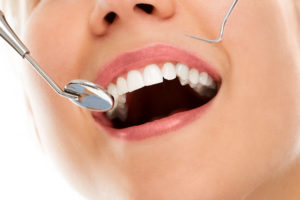Periodontal disease or gum disease refers to a dental condition in which the gums are severely affect by bacteria. If left untreated, this can even lead to tooth loss. However, this severe condition does not start out of the blue. Prolonged neglect of oral health, bacterial infestation, plaque, tartar buildup, and cavities result in this condition.
Preventing gum disease is crucial as the bacteria in the mouth can also get absorb into the bloodstream and affect other organs, including the kidney and liver. The first step towards oral health betterment is visiting a laser dentist to prevent the disease from progressing. As you visit a dentist, they will probably recommend laser periodontal therapy.
If your dentist has recommended periodontal therapy or you are just wondering what it is, this blog is for you. In it, we will explore the therapy and all that it entails.
Table of Contents
What is Periodontal Disease?
Before diving into periodontal laser therapy, it’s important to understand periodontal disease in detail.
Periodontal disease starts with gingivitis (the early stage), which is usually reversible and has no lasting effects as long as you maintain good oral hygiene and reduce sugary foods. However, if the disease progresses to an advanced stage—periodontitis—it can cause serious damage.
The bacteria in plaque can lead to gum recession, where the gums pull away from the teeth. In more severe cases, the bacteria can deteriorate the jawbone that supports the teeth, eventually causing tooth loss. This makes it crucial to prevent gum disease by undergoing periodontal therapy and addressing gum issues before they escalate into major problems.

What are the Symptoms of Periodontal Disease?
The common signs of periodontal disease are:
- Severe toothache.
- Persistent bad breath.
- Bleeding gums, especially after brushing or flossing.
- Red and swollen gums.
- Discolored teeth.
- Loose teeth.
- Receding gums.
What is Laser Therapy for Periodontal Disease?
If you have developed gum disease, periodontal therapy can provide some relief. Periodontal therapy includes a variety of treatments aimed at restoring your oral health. These include both surgical and non-surgical treatments for gum diseases. The option suitable for you will depend on your oral health condition.
What are the Non-Surgical Options?
The dentist may recommend non-surgical periodontal therapy depending on the severity of your gum disease. For instance, mild to moderate cases of gum disease can be treat with scaling or root planing, which cleans the plaque from the tooth’s root and underneath the gums. The dentist may also smooth down the surface of the root to prevent the entry of bacteria and keep you away from infections in the future.
Another non-surgical option is a tray medication or tray delivery system. In this procedure, a customized dental tray is fitted into your mouth to deliver medications directly into your gums.
What are the Surgical Options?
More severe cases require surgical treatments to restore the appearance and health of your gums and teeth. Surgical treatments include gum grafts, which are used to protect your tooth when the gums have receded too far. During this procedure, the gum tissue is extracted from a donor or the healthy area of the mouth and moved to the diseased part.

Gum flap surgery is another option in which the gums are cut and folded back so that the roots underneath can be thoroughly cleaned. In case the damage is too severe, the dentist may also recommend a dental implant.
Does Periodontal Therapy Hurt?
Although the procedures involved in periodontal therapy may seem daunting, none of them hurt. Before starting the process, the dentist will use a numbing agent on the gums and tooth roots. Local anesthesia is quick-acting and makes the area numb during the treatments. Scaling or root planing may cause little discomfort for patients with a low pain threshold. However, it may not necessarily hurt.
Once the treatment is over, the treated area may feel numb for an hour or two. Slight discomfort or tenderness is also normal as the anesthesia wears off. However, these unpleasant sensations usually go away after a day or two.
Takeaway
Since gum disease can continue to deteriorate oral health, immediate periodontal therapy is one of the best ways to help your gums heal and get back to being healthy. In the long run, the therapy can help keep your teeth safe and secure and your jawbone healthy and strong.
Get Your Gum Disease Treated at Brooklyn Blvd Dental!
Whether you have a gum disease or wish to get checked for one, our expert dentists are here to resolve all your dental issues.
Schedule an appointment with us today!
You can also contact us at (763) 533-8669.
Alternatively, visit us at 5831 Brooklyn Blvd, Brooklyn Center, MN 55429.




